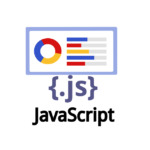What is Web3?
Web3, also known as the “decentralized web,” refers to the development of a decentralized, peer-to-peer (P2P) internet infrastructure that allows users to interact with decentralized applications (DApps) and interact with blockchain technology.
The term “web3” is often used to describe the combination of blockchain technology, smart contracts, and decentralized applications designed to operate on a decentralized network rather than relying on a central server or authority. This approach aims to provide greater security, privacy, and control to users and enable new types of applications and use cases that are not possible on the traditional, centralized web (also known as “web2”).
Web3 technologies are still in the early stages of development and adoption. Still, they have the potential to fundamentally change the way we interact with the internet and with each other online.
What is Web3 Gaming?
Web3 gaming refers to using decentralized technologies, such as blockchain and smart contracts, to create and operate games on the decentralized web (web3).
In web3 gaming, players can interact with each other and the game directly without the need for a central server or authority. This can provide greater security, fairness, and transparency to the game and enable new types of gameplay and in-game economies.
Web3 games can also take advantage of the unique properties of blockchain technology, such as the ability to own and trade non-fungible tokens (NFTs), which can represent special in-game items or assets. This can create new opportunities for players to earn and spend cryptocurrency and potentially increase the value of rare in-game items.
Web3 gaming is still a relatively new and emerging field, and it is likely to evolve and grow as decentralized technologies become more widely adopted.
Impact of Web3 on the Gaming Industry
Web3 technologies have the potential to significantly impact the gaming industry by providing new opportunities for players and developers. Some of how web3 could impact gaming include the following:
Increased Security and Fairness
Web3 games can be designed to operate on a decentralized network, providing greater security and justice than traditional, centralized games. Players can interact directly with each other and the game without a central server or authority.
New In-Game Economies
Web3 games can use blockchain technology to enable players to own and trade non-fungible tokens (NFTs) representing unique in-game items or assets. This can create new opportunities for players to earn and spend cryptocurrency and potentially increase the value of rare in-game items.
New Types of Gameplay
Web3 technologies can enable new types of gameplay that are not possible in traditional, centralized games. For example, games could be designed to operate on a decentralized network and use smart contracts to enable players to make transactions and interact with each other directly.
Greater player control
Web3 technologies can give players greater control over their in-game assets and activities. For example, players could have the ability to own and trade their in-game items directly rather than being subject to the rules and policies of a centralized game developer.
Overall, adopting web3 technologies in the gaming industry can bring significant benefits to players and developers. However, it is still a relatively new and emerging field, and it is likely to evolve and grow as decentralized technologies become more widely adopted.
It is important to carefully research and consider the experience and capabilities of any company you are considering working with for web3 game development. You may ask for references or examples of their previous work and discuss your specific project requirements and budget in detail.
Game Specific KPIs
Key performance indicators (KPIs) are metrics used to measure a game’s performance and success. The specific KPIs relevant for a web3 match will depend on the particular goals and objectives of the game, as well as the target audience and business model.
Some examples of game-specific KPIs that may be relevant for a web3 game include:
Daily active users (DAUs): The number of unique players who actively engage with the game daily.
Monthly active users (MAUs): The number of unique players who actively engage with the game every month.
Average session length: The average amount of time players spend in a single game session.
Player retention rate: The percentage of players who continue to play the game over time.
In-game revenue: The total amount of money generated by the game through in-game purchases, subscriptions, or other monetization methods.
Non-fungible token (NFT) sales: The total amount of money generated by the sale of NFTs, if applicable.
Player engagement: The level of player engagement with the game, including the number of in-game actions taken, social interactions, and other forms of activity.
Player satisfaction: The level of satisfaction that players have with the game, as measured through surveys or other feedback mechanisms.
We decided to examine how blockchain technology may assist in improving the KPIs above to demonstrate the benefits of Web3 gaming development. But let’s ensure everyone is up to speed on the essentials first. So let’s talk about two concepts that greatly define Web3 gaming:
GameFi
Different financial aspects may be easily included in Web3 games thanks to decentralized finance (DeFi). As a result, “GameFi” was coined. The words “game” and “financial” are mixed in the latter. You should be aware that the meaning of “GameFi” is quite open-ended. This description applies to any dapp that blends gamification with financial functionality.
P2E
Play-to-earn (P2E) gaming is one of GameFi’s features. We refer to a game as P2E if it is set up such that players can obtain either fungible or non-fungible tokens (NFTs). Once converted, these assets can be held on to or used to purchase fiat money, stablecoins, or other cryptocurrencies. This allows for the transfer of game-related learning to the real world.
Decentralized finance provides several perks, which boost Web3 gaming, it’s also crucial to mention. As a result, decentralization, transparency, and immutability are all features of on-chain games. It is thus no longer a question of “whether” there would be a shift from “pay-to-play” to “play-to-earn” because it has positive characteristics. What will be popular is already clear from trends.
Conclusion
Every sector will be greatly impacted by the move from Web2 to Web3. The Web3 gaming revolution has nevertheless already begun.
Reading about the primary benefits of Web3 gaming in the sections above will help you understand the “why.” Because Web3 games can enhance all four key gaming KPIs, it is only a question of “when” until they become the new norm. As a result, you need to produce some excellent Web3 games if you want to participate in this revolution. Before investing in the creation of games, you may speak with a Web3 development business.










